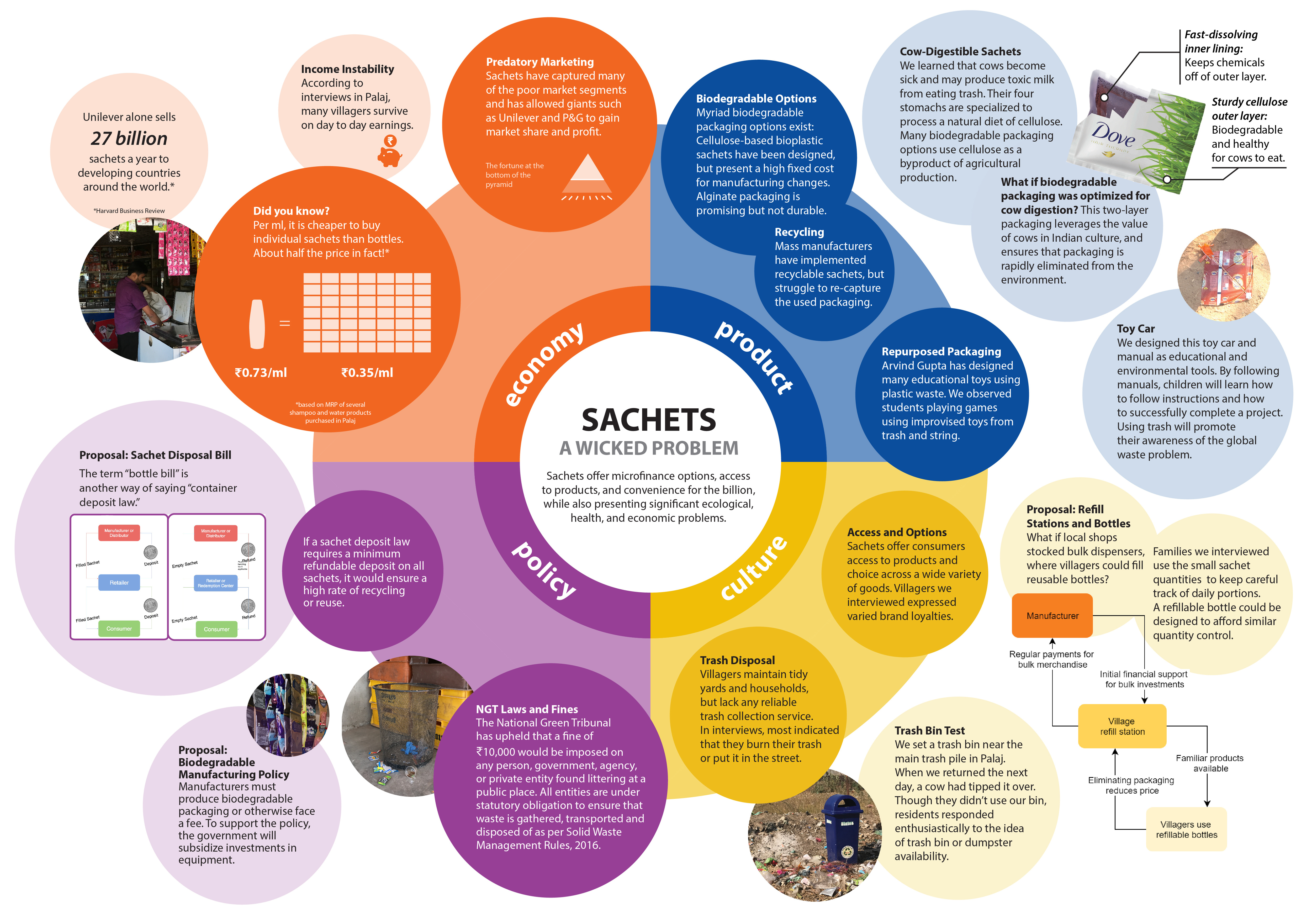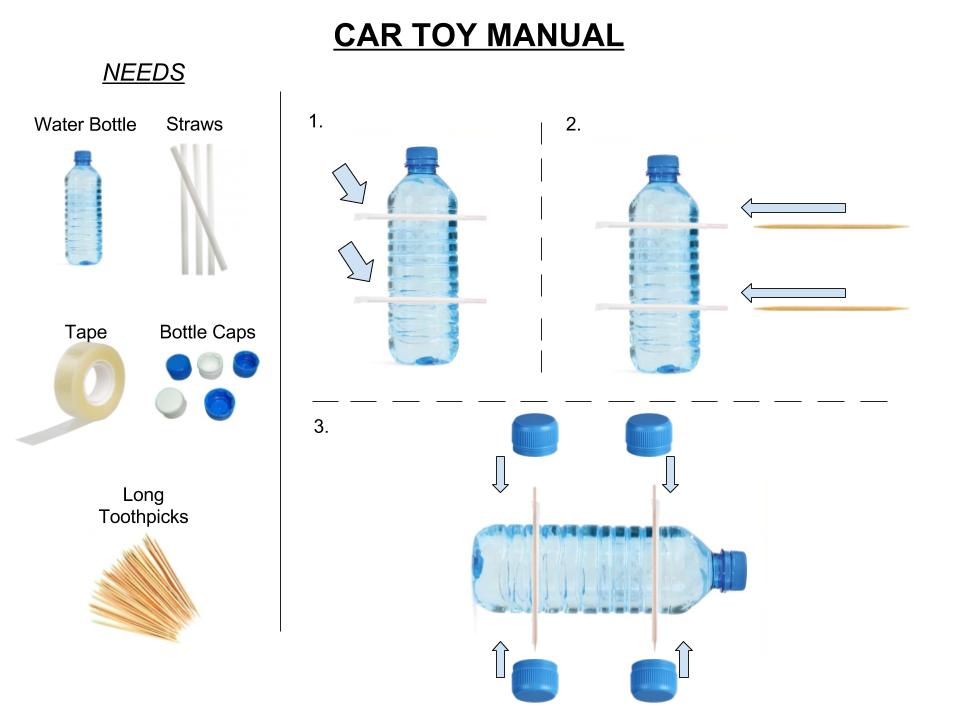January 2018
Design for a Billion: IIT Gandhinagar
Sachet Study
Leah Willemin,
Jacqueline Wu,
Catalina O’Connor, Daan Demeyer
Plastic sachet packaging is versatile, lightweight, moisture resistant, strong, and relatively inexpensive. Consumers may purchase name-brand products at an affordable scale, and corporate giants use sachets to tap into low-income markets. However, sachets contribute to damaging plastics waste.
Sachets wash into waterways and contribute to flooding. When they are properly disposed of, the quantity of waste overwhelms landfills. Via leaching or burning , sachet plastic emits chemicals that are toxic to the environment and human health.
How might we reduce the quantity and ill effects of sachet packaging waste?

Poster PDF
A multi-pronged approach
In our research, we found that sachets are a complex topic. They offer many benefits to users and those along the supply chain, and entrenched interests promote sachet use, including multinational companies and the plastic laminates lobby. Sachets also cause multiple problems. We could not offer one single solution to these issues, but instead, have proposed interventions in the categories of culture, policy, economy, and product.Research
We visited Palaj, and with an IIT student translating, interviewed several shopkeepers and groups of villagers.
The villagers we spoke with shopped mainly in Palaj. All interviewees preferred sachets or small-quantity packaging, and bought several sachets at a time. Families had brand loyalty, including Sunsilk and Dove. They also used the sachet portions carefully, and could report exactly how much they used daily, for example, half or a whole sachet. The small quantities were therefore being used as a budgeting tool, to measure consumption.
Two families interviewed said they put trash in dustbins, but later admitted that they put trash in the road. Villagers reported that they did not mind the trash visually. Two families we interviewed reported that they burned their trash, either outside or in the family cookstove.
One family said that they used a municipal trash pickup service. However, we spoke to many villagers, and could not find any other evidence of a municipal trash pickup service, even on the main paved road by the village.
Initial Visit Notes Document
Photo credit: Catalina O'Connor
Trash Can Test
We next returned to Palaj with a trash can, to see if an available bin would get used. We left the can overnight.When we returned, we found that the can had been knocked over by a cow, and then set upright in a corner by villagers. We spoke with a group who had seen the can. They told us that because it was a new presence, they hadn't used it for trash. They emphasized that it was not a sufficient intervention, and that the village needed many trash cans, or a dumpster. The people we spoke with said that they would put their trash in a municipal bin if one were available.
Toy Car

Designed by Daan:
"Kids can rebuild existing models out of clear instructions. We only provide the manual. They have to find the materials themselves. I designed this Toy Car and the related manual as an educational and environmental tool. By following manuals, children will learn how to follow instructions on how to successfully end a project. We think the children’s awareness of the global waste problem will expand by reusing trash in the classroom and through education regarding this topic."
Expert Interviews and Academic Research
We interviewed Madhu Vadali, a materials scientist from IIT, about the potential for biodegradable sachet packaging. We learned that the cost in biodegradable sachets might be mostly in the fixed cost of making a manufacturing shift. Since India is largely an agricultural economy, the plant materials necessary for bioplastics might be readily available, and, as byproducts of food production, not too expensive. However, agriculture in India currently faces challenges of efficiency, as crop yield is low for the land potential.
Materials interview summary
We also spoke with a waste management consultant from Gandhinagar, Nupur Tandon. She had managed the waste management system design for IIT. She informed us about government policy around waste management and trash pickup.
Waste management interview
In addition to interviews, we conducted extensive research of academic articles, news articles, and other online sources.
Works cited spreadsheet
